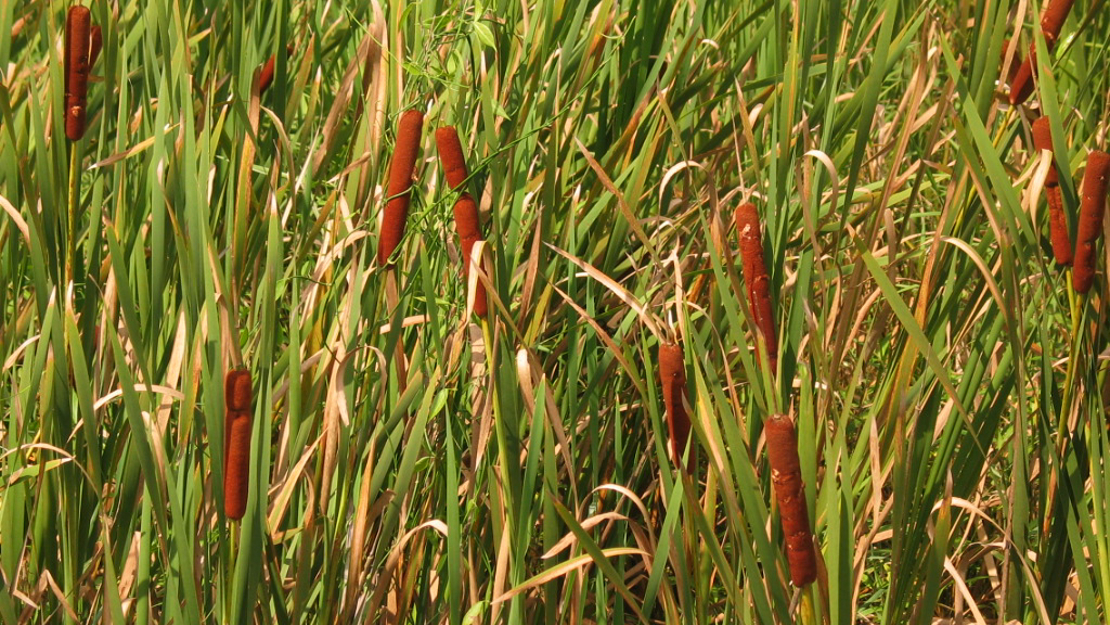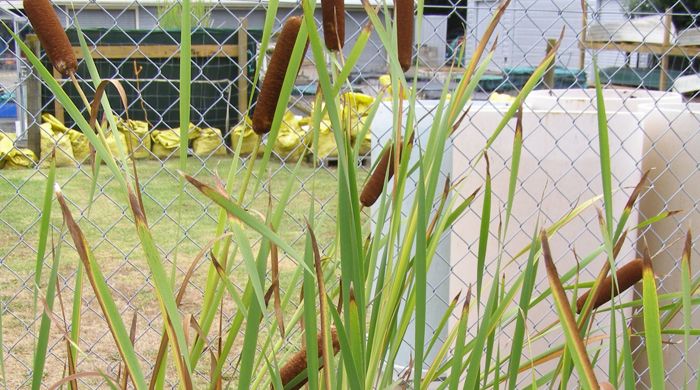Typha latifolia
Great reedmace
Also known as:
Broadleaf cattail, common cattail, giant reedmace
Family: Typhaceae
Origin: Africa, Eurasia, North and South America

Regional Pest Management Plan (RPMP) status
- Whole region — Eradication
- National Pest Plant Accord Species
General description
Perennial aquatic reed, < 3 m tall. Rhizomes form a thick mat. Leaves are wide, flat, stiff and pale grey/green. Flowers are borne in erect, sausage-shaped, dark brown/black inflorescences. Fruit is tufted and appears in early summer.
What you need to know
To help protect our environment:
- you must not breed, distribute, release or sell great reedmace. As great reedmace is a National Pest Plant Accord species, these restrictions apply within the Auckland region and across the whole of New Zealand
- you must not plant great reedmace within the Auckland region.
Auckland Council will control great reedmace at all sites where it is known to occur.
If you see great reedmace anywhere in the Auckland region, please report it to Auckland Council at pestfree@aucklandcouncil.govt.nz.
Habitats
Wetlands, water bodies and margins < 1 m deep.
Dispersal
Seeds dispersed by wind, water and animals. Vegetative spread from rhizomes. Human-mediated dispersal through contaminated machinery.
Impact on environment
Forms dense thickets, suppressing native vegetation and altering flow regimes. Potential to directly compete or hybridise with threatened taonga species raupō.
Control
Recommended approaches
Do not attempt to undertake control of this species. Please report to Auckland Council.
;Caution: When using any herbicide or pesticide please read the label thoroughly to ensure that all instructions and safety requirements are followed.

Microsoft.CSharp.RuntimeBinder.RuntimeBinderException: 'Newtonsoft.Json.Linq.JValue' does not contain a definition for 'macroAlias' at CallSite.Target(Closure, CallSite, Object) at System.Dynamic.UpdateDelegates.UpdateAndExecute1[T0,TRet](CallSite site, T0 arg0) at CallSite.Target(Closure, CallSite, Object) at AspNetCore.Views_Partials_grid_editors_macro.ExecuteAsync() at Microsoft.AspNetCore.Mvc.Razor.RazorView.RenderPageCoreAsync(IRazorPage page, ViewContext context) at Microsoft.AspNetCore.Mvc.Razor.RazorView.RenderPageAsync(IRazorPage page, ViewContext context, Boolean invokeViewStarts) at Microsoft.AspNetCore.Mvc.Razor.RazorView.RenderAsync(ViewContext context) at Microsoft.AspNetCore.Mvc.ViewFeatures.HtmlHelper.RenderPartialCoreAsync(String partialViewName, Object model, ViewDataDictionary viewData, TextWriter writer) at Microsoft.AspNetCore.Mvc.ViewFeatures.HtmlHelper.PartialAsync(String partialViewName, Object model, ViewDataDictionary viewData) at AspNetCore.Views_Partials_grid_editors_base.ExecuteAsync() in C:\home\site\wwwroot\Views\Partials\grid\editors\base.cshtml:line 6



